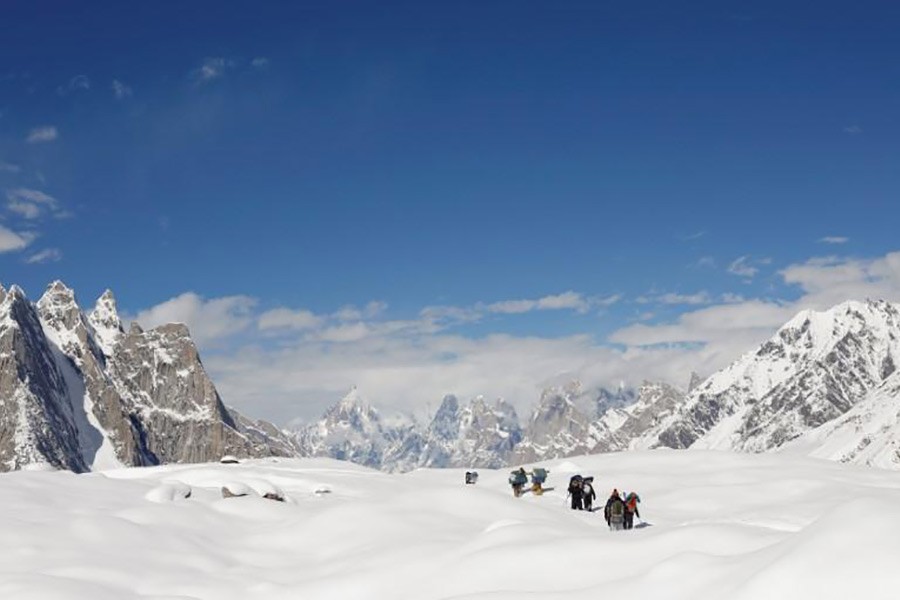
Published :
Updated :

Polar ice sheets continue to break down, showing large pools of sea-water scattered in isolation. Large ships now move between places in these areas. After hundred years of melt reducing the size of the monumental Himalayan glaciers, it's now the turn of the Swiss ice chunks. The pace of melt has gained an alarming speed in the deep recess of the Himalayas in the recent decades. According to the latest study, Switzerland's glaciers have lost a tenth of their ice mass in the past five years alone. It has been viewed as a melting rate unmatched during observations stretching back more than a century.
The study observes measurements on 20 Swiss glaciers have shown that melt rates this year have reached 'record levels'. These developments related to Central European glacial melts have brazenly appeared in the recent heat waves in parts of the continent. The accompaniment of the intermittent flooding in the USA, and in parts of Europe --- as well as oceanic storms battering the island-territory of the Bahamas and the unincorporated US territory of Puerto Rico invokes the decades-old dread of approaching climate disasters. Japan and the Philippines are still reeling from the recent hurricanes --- Typhoon Hagibis and a number of yearly typhoons respectively. Meanwhile, the signs of untimely droughts have made a number of countries brace for an unexpected bout of disasters. According to climatologists, global warming is set to soar past the permissible level of the pre-Industrial 1.5 Celsius. It rings alarm for a number of countries lying on the path of sea-level rise.
Bangladesh has long been included in the list of the countries made to remain poised for bearing the brunt of climate change impacts. Ominous warnings are in the air. They include tracts of the coastal Bangladesh disappearing one day into the Bay of Bengal. The process is said to have begun already. There are other signals as well. One of them is prolonged monsoons leading to localised floods. As per Bangla calendar, during the present month of Ashwin rural people begin smelling the approaching season of winter. Over the last few years, the lingering monsoon has been found to be fully active in the country. In the past, the air would start getting cooler, with the rainy weather disappearing altogether, from late-October. During November, parts of the northern and southwestern regions would start feeling the bite of cold. As has been seen in the recent decades, winter remains conspicuous in Dhaka and the other large urban areas with their absence.
Perhaps as part of the weird behaviour of the Bangladesh winter, the cold season, these days, flirt with its people. Winter has stopped descending on the localities with its earlier sunny brightness. What's most worrying is that the wintry Himalayan gale blowing from the north has turned into a virtual summer breeze. The 'intensity' of cold nowadays reminds many of the bone-shaking, yet sunny, winter of the old days occurring only at intervals --- i.e. in the gap of years. Many, however, feel consoled over the fact that the unpredictable pattern of the seasonal cycles is not confined to Bangladesh and a few other countries. It has become a global phenomenon. Moreover, as years wear on, people in almost every corner of the planet might have to take preparations for more massive topsy-turvy events in nature. Given the arrogance of some powerful nations on the question of climate, the nearing of an apocalypse is just getting speedier.


 For all latest news, follow The Financial Express Google News channel.
For all latest news, follow The Financial Express Google News channel.